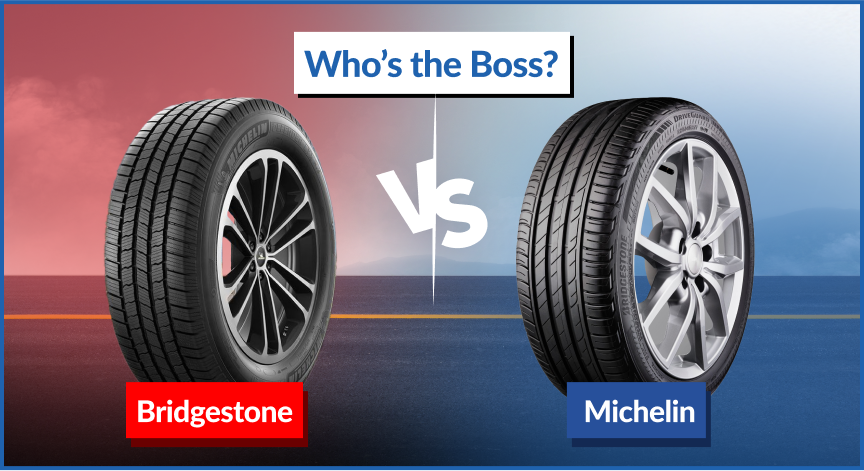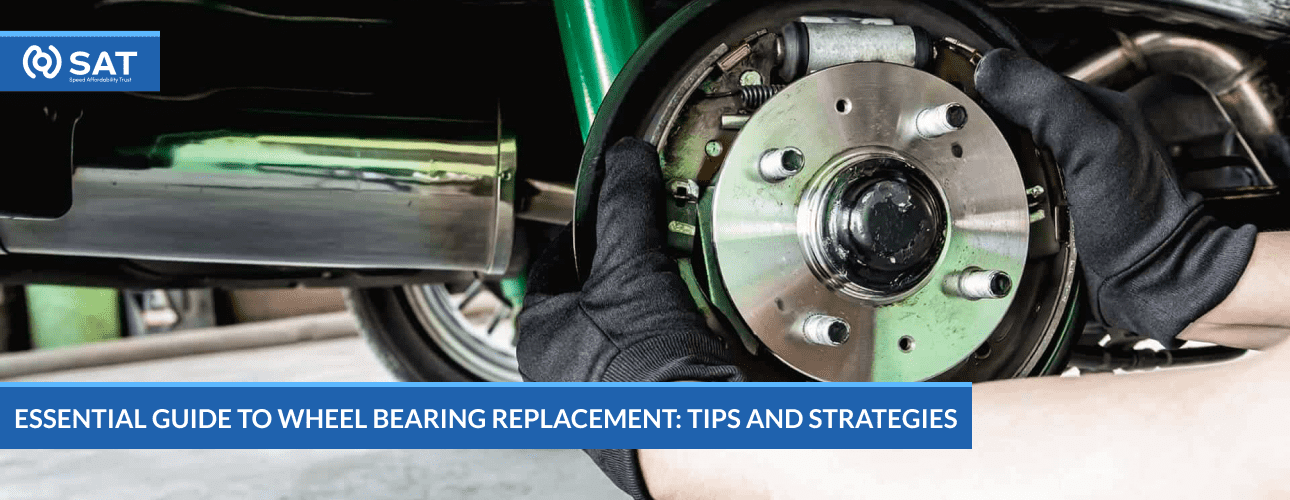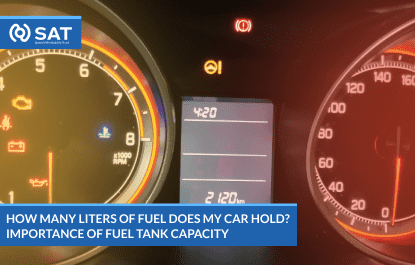
Bridgestone Vs. Michelin Tires – Who’s the Boss
Bridgestone and Michelin are the two industry giants of the tire market.

A wheel bearing is an essential part of a vehicle’s wheel assembly; it makes wheel rotation smoother and more efficient. Wheel bearing replacement plays a major role in ensuring overall behavior. A smooth wheel bearing ensures low friction, adequate support for the vehicle’s weight, and smooth handling and steering capabilities.
As the wheel bearings become worn or fail, they can cause severe problems, like irregular tire wear, bad car handling, or even a disconnected wheel, which is potentially life-threatening.
Knowledge about wheel bearing replacement becomes crucial in ensuring your car’s well-being. In this manual, you will find a comparative analysis of symptoms that reveal the need to replace wheel bearings, the tools required, the steps involved, and the safety tips necessary while doing the replacement. These tips can boost the life of your vehicle yet still make it exciting while driving. Therefore, you will have safe driving with an increased performance.
Here are the symptoms that are the main indications of wheel bearing replacement.
Unusual Noises: One of the most noticeable symptoms of a defective wheel bearing is a funny noise coming from the wheels. Examples may be grinding, humming, or roaring noises that grow louder as you speed up.
Vibration and Wobbling: The steering wheel shaking or wobbling at higher speeds might be a symptom of a failure of the wheeling bearings.
Uneven Tire Wear: Sometimes, the tires can wear unevenly due to other problems, but worn-out wheel bearings can also contribute to uneven tire wear.
Loose Steering: The wheel bearing may be faulty if you feel a looser or less precise steering wheel.
ABS System Issues: The ABS warning light could be triggered by a spinning wheel in case a failing wheel bearing happens.
Pulling to One Side: A vehicle that consistently pulls to the side while driving and braking may have an issue with its wheel bearing.
How to Detect the Problem with the Wheel Bearings
Here are a few things that can help to detect if the wheel bearing has some issues.
Listen for Noises: Drive your car quietly and listen for any strange wheel sounds. Paying attention to the noise change while turning helps determine the problematic wheel by noise.
Check for Play: Carefully lift your car using the jack, then station it down with the stands. Hit the wheel at the top and bottom and try rocking it backward and forwards. The bearing is usually worn due to excessive movement or play.
Inspect the Tires: Check the tire treads for any sign of imbalanced wear. If one tire has worn out faster, there could be a problem with the wheel bearing.
Feel for Vibration: Be sensitive to any odd vibrations of movement while driving. A lot of the time, it can be felt through the steering wheel or the whole body of the car.
ABS Warning Light: If the ABS warning light is on, it may be related to a wheel bearing failure. Use a diagnostic tool to check ABS-related error codes.
Professional Inspection: If you are uncertain, have a professional mechanic inspect your car. They can use specialized tools to diagnose your wheel bearing condition accurately.
Such indications should be seriously considered to prevent further destruction and ensure your car is safe and running well.
Initially, ensure you have all the tools and materials needed for a successful and smooth replacement of wheel bearings by ensuring you have everything before you start. You will need a jack and jack stand to lift and stabilize the vehicle, a lug wrench to loosen the wheel, a socket to deal with all the bolts, a hammer, a punch, a bearing puller or slide hammer, and new wheel bearings. Also, the torque wrench, grease, and gloves would be very useful to ensure proper and safe installation.
Safety provisions must not be ignored when working with vehicles of any kind. First, ensure the vehicle is on a flat, stable surface with no movement to avoid shifting while it’s lifted. Never forget to place jack stands under a vehicle when you lift it up with a jack; do not use jack stands alone because they are not as reliable as jacks, which may lead to the vehicle’s heavy weight crashing down. Safety gloves and goggles can help keep your hands and eyes clean from debris and grease. Keeping a clear and orderly workstation with all the tools close to each other helps prevent inconveniences or distractions.
Lift the Vehicle: Put a jack under the vehicle to lift it and adjust it with a jack stand. Ensure the vehicle is stable, and do not remove any parts.
Remove the Wheel: Remove the wheel with a lug wrench to get the brake assembly out.
Remove the Brake Assembly: By removing the brake caliper and the rotor, you can access the wheel bearings to get access to the wheel bearing. Apply the proper socket to unbolt the caliper and then tie it aside using a wire or rope to avoid stretching the brake line.
Extract the Old Bearing: Getting into the wheel bearing is possible once the brake assembly has been removed. Use a bearing puller to remove the old bearing or a slide hammer for the same purpose.
Removing Old Wheel Bearings: Depending on the type of vehicle and the difficulty of the job, you will need to lift and secure the vehicle, then remove the wheel, brake caliper, and rotor. With suitable tools, remove the old bearing from the hub; upon completing the task, thoroughly clean the hub.
Installing New Wheel Bearings: Apply grease to the new bearing and install it into the hub assembly, ensuring proper alignment. Remember to ensure that all parts and fasteners are securely fastened based on manufacturer specifications. Be ready to run through a test drive with eyes looking for irregularities.
Inspect after finishing the wheel bearing replacement to ensure the proper installation of each component and its correct function.
Inspect all components to ensure that the new wheel bearing is secured and properly positioned within the hub assembly. Check for anything loose or under-tightened.
Take the wheel bearing for a test drive to determine whether its performance improves your vehicle’s performance. Give special consideration to an abnormal noise or unnatural feeling when the work is done, as these can be clues to faulty installation work.
In case any problems will occur during the test drive or afterwards the repair, identify and fix them right away. Do a pre-trip inspection, look for loose parts, misaligned parts, or overheating that could cause problems on your road, respectively, and repair in case you find anything.
These maintenance tips can help to improve the life of wheel bearings.
Lastly, timely wheel bearing replacement plays a crucial role in ensuring vehicle safety and efficiency. Failing to replace worn-out or damaged bearings may cause dangerous driving conditions such as loss of control and uneven tire wear. You need to attend to indicators of signs of bearing wear immediately.
If you doubt your wheel bearings’ condition or don’t know how to replace them, consulting a qualified mechanic is necessary. The technicians’ skills ensure correct replacements are done so you will be safe on the road. Trusting professionals for the critical maintenance of wheel bearing replacement enhances the performance and confidence of a driver in the vehicle.
What are the indicators that my car bearings require replacement?
Check for any unusual sounds, such as humming or grinding, vibrations around the steering wheel, or uneven tire wear. If you want to identify the problem, check the wheel bearings.
How often should the bearings of the wheels be changed?
Wheel bearing life expectancy can differ based on factors such as driving conditions and the amount of use of the vehicle. Nevertheless, as a general safety concern, it is recommended to check the wheel bearings during scheduled maintenance intervals and replace them if any wear or damage is seen.
Should I do the wheel bearing, or should I meet a professional?
Although a few DIY-competent people will feel confident replacing the wheel bearings by themselves, it is recommended that they contact a professional mechanic. Wheel bearing replacement involves the use of specialized tools and expertise to install and align the bearings correctly, which greatly influences vehicle security and performance.
What makes wheel bearings finish their life cycle earlier than normal?
Factors including overloading the vehicle over its recommended payload, driving over rough terrain or potholes, and poor lubrication conditions can all cause premature deterioration of the wheel bearings. Regular maintenance and safe driving habits help to prolong their lifespan.
What is the price for a new wheel bearing installation?
The cost of replacing wheel bearings can differ depending on several factors, including the vehicle’s manufacturer, the shop’s location, and the use of either brand-new or aftermarket parts. It is recommended to refer to mechanics with good reputations or service providers for a precise estimate.
Japanese Used Cars in Azerbaijan
Japanese Used Cars in Canada

Bridgestone and Michelin are the two industry giants of the tire market.

Considering the recent developments in the world order, oil prices have increased significantly over the last decade. During such times, being well-researched about your car fuel tank and its features can be extremely useful in cost-cutting. Knowing about your car’s fuel capacity may not seem too significant at face value, but such a basic factor […]

Subaru is widely known for being a highly reliable manufacturer of vehicles that are simultaneously safe and stylish. Because of Subaru Models‘ performance and reliability, these vehicles have a loyal fanbase that swears by them. However, there are some limitations with their boxer engine, and one of the faults in some Subaru vehicles is the […]